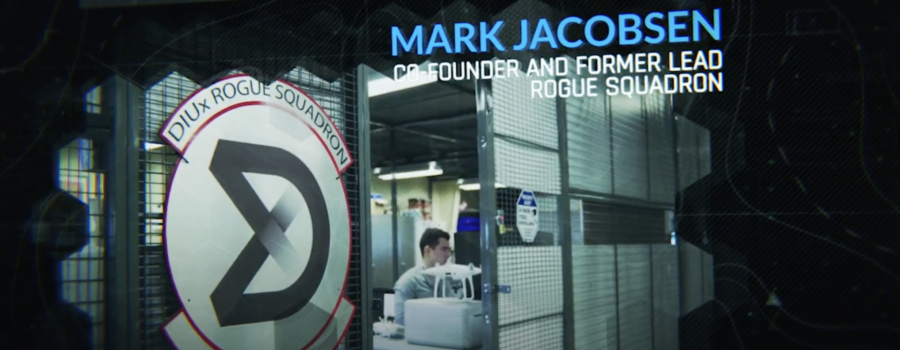A huge thanks to my Defense Innovation Unit colleague Zach Walker for inviting me onto his DIU-Ex podcast to talk about my experience founding and leading Rogue Squadron, an agile software development team that specialized in small drones and counter-drone technology. The best part is Zach’s amazing intro video!
Below I summarize the topics we discussed.
(1:00) Introduction and Rogue Squadron Overview. I discuss the rapid evolution of ISIS’s drone air force in Mosul, from 0 drones to 12-aircraft coordinated attacks in a few months. We saw the need to create an insurgent red team within DoD to help anticipate emerging drone threats. Over time, we were drawn more and more into sUAS and C-UAS capability development rather than red teaming.
(3:30) How Rogue Squadron fit into DIU’s Autonomy Portfolio. Once we started developing capability, we were able to fill critical niches that industry hasn’t responded to yet. However, we had to strike a careful balance about not competing directly with commercial companies. At the time we started, DIUx supported a variety of experiments with different business models, and Rogue Squadron fit comfortably within the organization.
(5:45) Rogue’s challenges as DIU consolidated its business model. As DIU matured, the Department of Defense Research & Engineering (OSD/R&E) leadership and DIU leadership sharpened DIU to focus on a specific business model: using the Commercial Solutions Opening process to award contracts to industry. Internal capability development was outside that model, which put Rogue in a challenging position.
(6:30) How Rogue managed its human capital. Getting the right talent was the key to success but an extraordinary challenge within DoD’s bureaucracy. I discuss the pros and cons of different options, poaching military members using TDYs, getting in trouble for advertising contractor positions, and fighting to get the right people.
(11:00) How we avoided bad apples and built a winning culture. I discuss the importance of a high-trust culture (I was heavily inspired by Simon Sinek’s Leaders Eat Last) and our key hiring criteria (mission focus and aptitude to learn).
(12:40) What Rogue accomplished. We discuss Rogue’s reputation as an expert sUAS team in the U.S. federal government and allied governments. I touch on specific projects like a forensic tool, security analyses of foreign-made drones, and advising the Army and DIU Autonomy portfolio on Short Range Reconnaissance and trusted supply chains.
(15:20) Is there room for more teams like Rogue Squadrons in DIU? Rogue’s magic was that we–as government employees–could build or modify things internally and then field them immediately. That often included making in-house tweaks to commercial tech. I believe uniformed military officers have to play this role in today’s fast-changing world. However, the idea of military officers creating or modifying capability did not sit well with some leaders. Also, despite our early success building the right team, DoD makes it very difficult to sustain a team like this over time.
(18:50) Rogue’s legacy as it transitions into the Defense Digital Service. I hope that our business model can serve as a case study to help other teams in the future. DoD is collectively learning how to write software. Rogue is one of a number of teams that have a role in that. I also discuss some specific initiatives like trusted supply chains and Rogue’s counter-UAS capabilities, which used software development practices a generation ahead of many DoD programs.
(21:00) What I wish I’d known when I first started. I wish I had had more training in practical skills and knowledge about how to innovate inside large organizations. In the DoD that would include topics like handling money, contracting, and manipulating the personnel system.
(22:15) The need for speed. DoD is optimized for consensus and stability over speed, but if Rogue was optimized for one thing, it was speed. We believed speed was its own source of advantage in today’s world. That brought certain risks, but mitigated other kinds of risks.
(23:20) Conclusion. I hope our story inspires others, and look forward to seeing what other innovators and their teams do.
